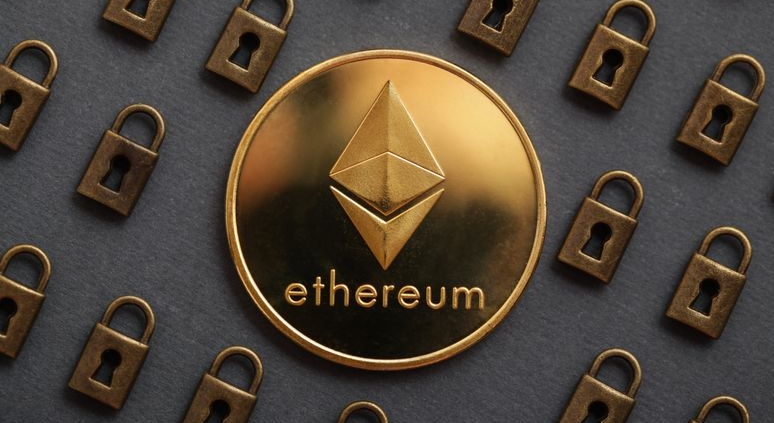August 24, 2022
What is the Ethereum Merge?

If you have any interest in cryptocurrencies and the blockchain, you’ve probably heard of Ethereum. Ethereum is a programmable blockchain. The native cryptocurrency of Ethereum is called Ether (ETH). Ether is the second largest cryptocurrency by market capitalization next to Bitcoin.
The Ethereum Merge upgrade is “the most significant upgrade in the history of Ethereum1.” It’s an upgrade to a more sustainable consensus mechanism that is seven years in the making. Ethereum’s current consensus mechanism is called Proof-of-work. It relies on a computationally intensive activity known as mining to process and verify transactions on the blockchain.
At this time, the Merge is nearing its final stages of testing and development and is set for activation in Q3 or Q4 of 2022, assuming no further delays1. The Merge will replace the current PoW mechanism with an alternative protocol called proof-of-stake (PoS) – a different more eco-friendly model for securing public blockchains.
The switching of consensus protocols can be a complicated concept to try and understand. To help, the Ethereum website offers a useful analogy.
“Imagine Ethereum is a spaceship that isn’t quite ready for an interstellar voyage…The community has built a new engine and a hardened hall. After significant testing, it’s almost time to hot-swap the new engine for the old mid-flight. This will merge the new, more efficient engine into the existing ship, ready to put in some serious lightyears and take on the universe1.”
The transfer from PoW to PoS
With PoW, network stakeholders known as miners use specialized hardware to solve complex math problems. This computational work is expended in order to append new blocks to the blockchain. In exchange for their work, they are rewarded with ETH.
Under the new PoS consensus protocol, the process is different. Those who have a minimum balance of 32 ETH can stake their coins to become validators. Under PoS, validators instead of miners are the network stakeholders that add blocks to the blockchain.
The central motivation for moving away from PoW as a consensus protocol is to reduce the energy usage of Ethereum. Proof-of-stake consumes less energy. Developers anticipate Ethereum’s electricity consumption as a network will drop by more than 99.9%, and mining is expected to become obsolete on Ethereum2.
How will The Merge impact the supply of Ether?
After the Merge, the supply of ETH is expected to decrease over time, making it a deflationary cryptocurrency.
Due to a code change activated back in August 2021, each time a transaction is completed, part of the transaction fee is burned and removed from circulation forever. If we assume demand for ETH remains consistent, this means the price of every coin should rise.
How are validators rewarded?
With PoS, there is no longer a need to purchase expensive computer equipment to become a validator. Instead, only 32 ETH is required. With The Merge, validators will be rewarded for their participation by receiving interest on their staked coins allowing them to earn a passive form of income.
As the total amount of ETH staked grows, and there are more validators actively participating in securing network consensus, the returns for running an Ethereum validator will decline. In other words, the network will pay each validator less in interest for their work because there are more people participating and raising the level of security on Ethereum.
If the total amount of ETH staked decreases and there are fewer validators participating, returns will then increase to encourage additional participation.
What is developer Merge testing?
The Merge is not a simple process and there is potential for things to go wrong. So, developers and users have been testing The Merge upgrade to work through any bugs. A series of tests have been completed to ensure The Merge code is ready to go before it is fully activated. Once testing is complete, it’s a matter of patiently waiting for The Merge to be successfully activated.
How can you invest in crypto?
Ethereum provides investors with an opportunity to put their ETH to work and earn passive income by staking. Those that are looking for a simpler way to invest in Ethereum and other cryptocurrencies can explore our suite of crypto exchange traded funds (ETFs).
You can also access our latest commentary to learn more about the Ethereum Merge and its impact to CI Galaxy Ethereum ETF.
1 Source: Galaxy Digital
2 Source: Galaxy Digital
About the Author
Galaxy Asset Management LP is a diversified investment management company with a team of long-tenured institutional experienced professionals managing third-party capital across traditional and alternative asset classes, with strong relationships and connectivity in the digital asset, cryptocurrency and blockchain technology sector.
IMPORTANT DISCLAIMERS
This document is provided as a general source of information and should not be considered personal, legal, accounting, tax or investment advice, or construed as an endorsement or recommendation of any entity or security discussed. Every effort has been made to ensure that the material contained in this document is accurate at the time of publication. Market conditions may change which may impact the information contained in this document. All charts and illustrations in this document are for illustrative purposes only. They are not intended to predict or project investment results. Individuals should seek the advice of professionals, as appropriate, regarding any particular investment. Investors should consult their professional advisors prior to implementing any changes to their investment strategies.
Certain statements in this document are forward-looking. Forward-looking statements (“FLS”) are statements that are predictive in nature, depend upon or refer to future events or conditions, or that include words such as “may,” “will,” “should,” “could,” “expect,” “anticipate,” “intend,” “plan,” “believe,” or “estimate,” or other similar expressions. Statements that look forward in time or include anything other than historical information are subject to risks and uncertainties, and actual results, actions or events could differ materially from those set forth in the FLS. FLS are not guarantees of future performance and are by their nature based on numerous assumptions. Although the FLS contained herein are based upon what CI Global Asset Management and the portfolio manager believe to be reasonable assumptions, neither CI Global Asset Management nor the portfolio manager can assure that actual results will be consistent with these FLS. The reader is cautioned to consider the FLS carefully and not to place undue reliance on FLS. Unless required by applicable law, it is not undertaken, and specifically disclaimed that there is any intention or obligation to update or revise FLS, whether as a result of new information, future events or otherwise.
